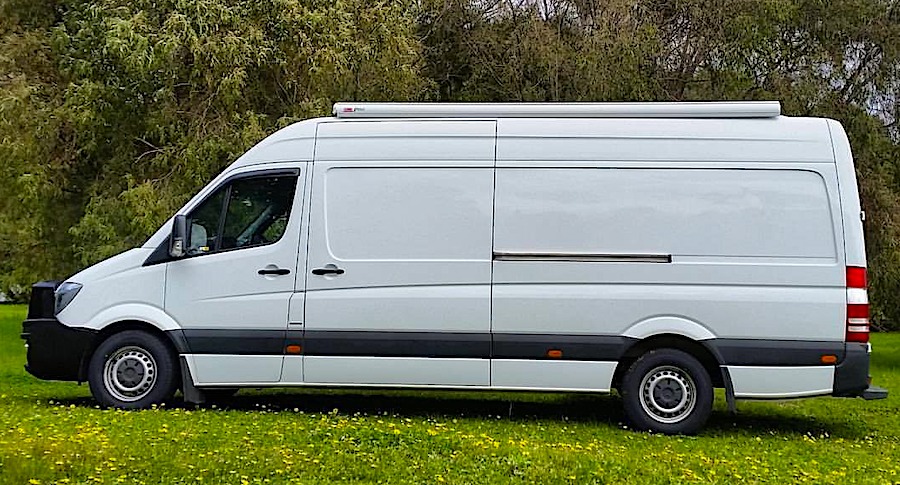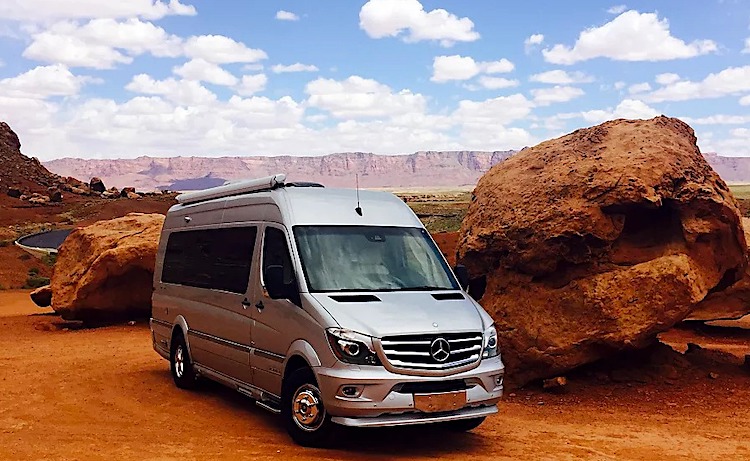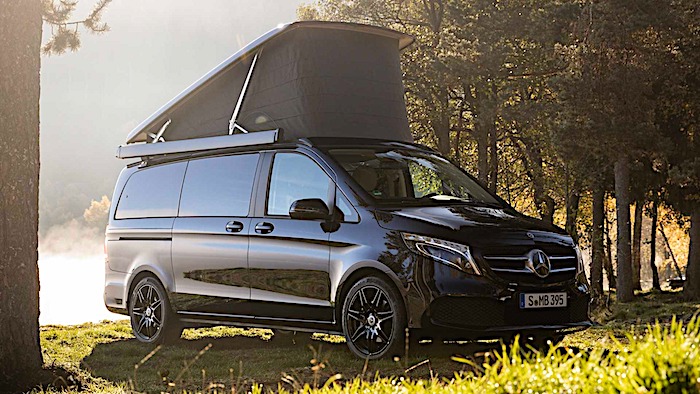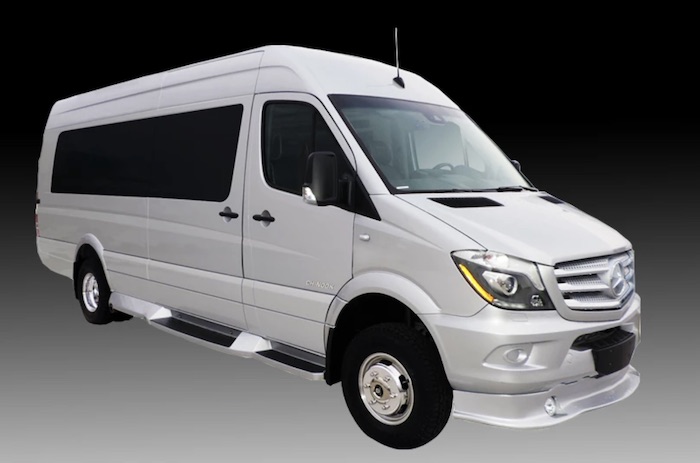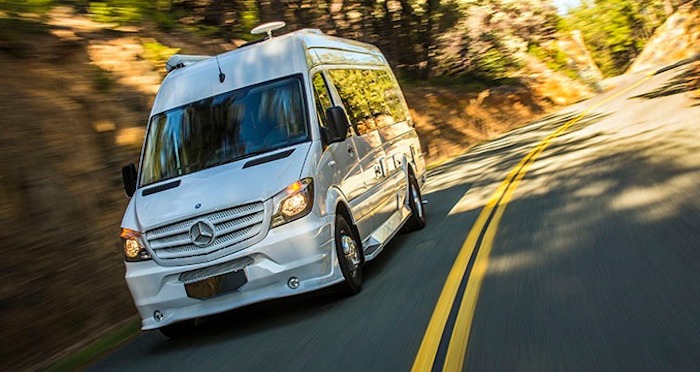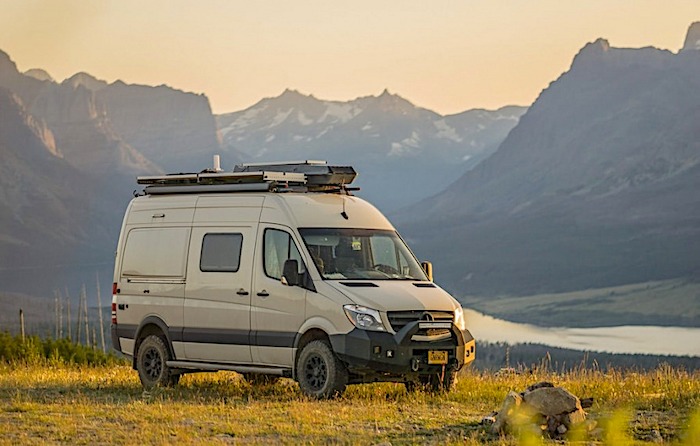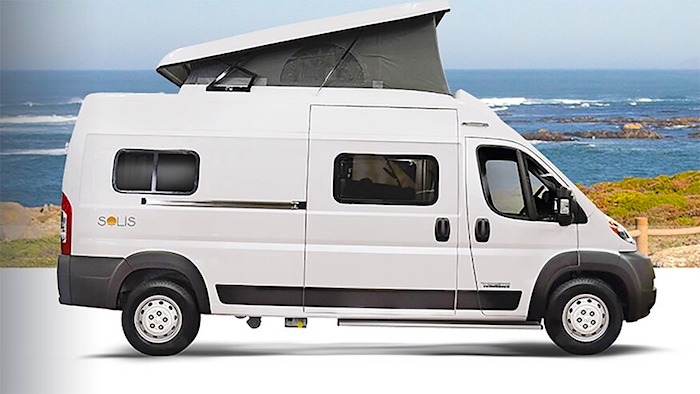Thanks for your support! If you make a purchase using our links in this article, we may make a commission. And, as an Amazon Associate, I earn from qualifying purchases. See the full disclosure here.
If you’re considering building, or purchasing, stealth camper van for off grid, and want to learn more, you’re in the right place at the right time. But What is a Stealth Camper Van for Off Grid Camping?
RVing is a pastime activity, and way of life, for outdoor enthusiasts around the world.
For many RVers, however, getting off grid and operating with a low profile is the thing to do.
With a stealth camper van, both are easy enough goals to achieve.
But, first, let’s take a moment to catch up those folks who are new to camper vans, in general, or off grid camping.
What is a Camper Van?
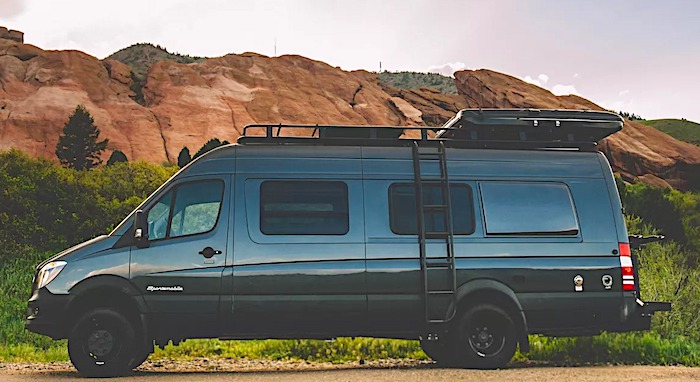
A camper van technically qualifies as a Class B recreation vehicle. They are also called camper or motor caravan by some. At any rate, most camper vans are full-size vans that are retrofitted. Most featuring a bed, basic appliances, and little else. Other features may include the likes of TVs, microwaves, surge protectors, and even solar panels or power generators.
In recent years a large number of camper van manufacturers have begun popping up. This is due to their growth in popularity, specifically in the United States and Europe.
Despite their small size, many camper vans have a tall ceiling of six to seven-plus feet. Others are designed with no intention of being able to fully stand in (as they are mainly for driving and sleeping in). Either way, there is typically plenty of room to move around inside regardless of outward appearances.
Many camper vans include RV basics such as sleeping quarters, kitchen and storage areas, and sometimes even a bathroom. Most camper vans are actually pretty basic in comparison to comparable RVs. That said, they also require less gas and mechanical upkeep than much larger RVs and motorhomes do.
What Classifies a Camper Van as “Stealth”?
In today’s world of RVing, the term stealth camper van refers to seemingly ordinary cargo and passenger vans that have been remodeled to be low-key vamping vehicles. Many times stealth camper vans are for off grid use. However, they are heavily used in urban areas (parking lots, residential streets, rest stops and more) as well.
For the most part, they fit the same description given above for camper vans. However, one of the most significant purposes of a stealth camper van is to remain undetected. For this purpose, plain white vans (even mini-vans such as Dodge Caravans) are highly popular as stealth camping vans. This is very much setting them apart in appearance in comparison to normal camper vans and smaller RVs of similar sizes.
These particular types of camper vans are less expensive than traditional RVs and camper vans as well. In regards to maintenance and fuel costs, they are often far superior to other small RVs and large manufactured sprinter-style camping vans.
But, before jumping on craigslist and buying the first van that you see for sale in your area (to convert into a stealth camper), make sure that you’re fully aware of the stealth camping laws in your area.
What Does “Off Grid” Mean?
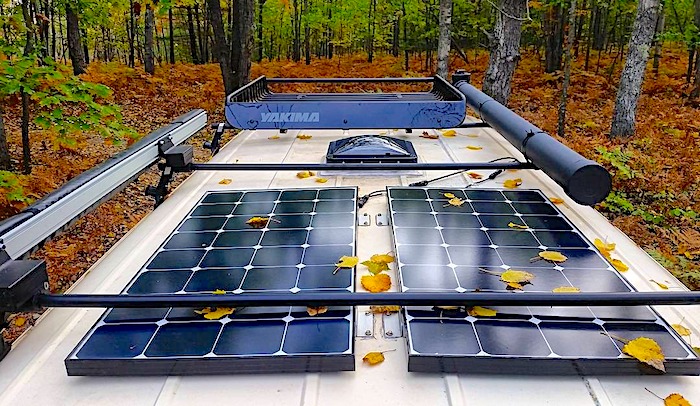
Nowadays, the term “Off Grid” is thrown around pretty regularly. But, for many, the meaning of the term is completely unknown to them.
“Off Grid” simply refers to being disconnected from the “main” grid. That said, the term refers mainly to the electrical grid but may also include other common utilities such as gas, water, and waste lines.
In the past, going “Off Grid” was mainly for folks building cabins, cottages, or small communities away from significant populations such as interstates, cities, and towns. Today, however, more and more people are using everything from motorhomes to stealth camper vans for going off grid.
For those who enjoy their privacy, and wish to maintain a low profile, stealth camper vans are one of the best (and easiest, as well as most affordable) options out there. Practically anyone with a bit of cash can find, buy, and customize a stealth camper van.
Considerations to Make When Planning a Stealth Camper Van
Now that we’ve discussed what exactly camper vans are, and what qualifies one as being a stealth camper van, let’s have a look at some of the most important considerations to keep in mind while shopping for (or working on) a van to convert into a stealth camper.
1. Size of Van
First and foremost, size matters a lot. The number of people who will be using (and more importantly, living in) the van is the most significant factor to count when picking out a van. Another thing to keep in mind, concerning size, is how easy (or hard) the van will be to park and maneuver.
In addition, there are other considerations to pay attention to regarding size while planning a stealth camper van.
These factors include roof width and length (for solar panels or water tanks), interior spacial measurements (for adding sleeping area, kitchen, bathroom, and storage), and headspace height on the inside (you don’t want to constantly bump your head), just to name some of the most significant ones.
2. Features (Inside & Out)
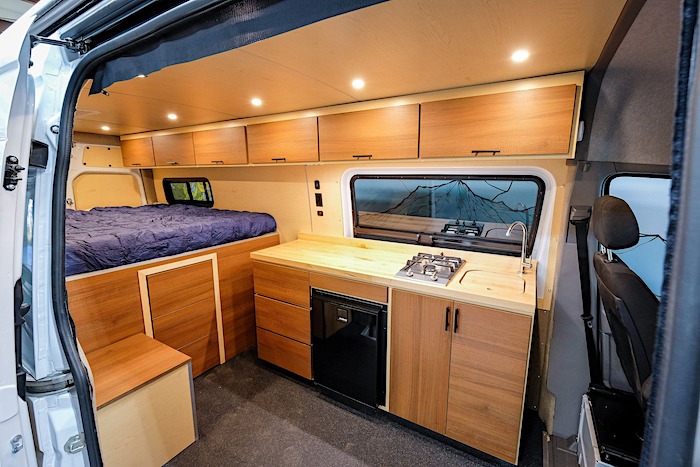
What features a van comes with when you buy it is also very important to consider. The more features it already has, the more convenient it will be to convert into a stealth camper.
The main features to look out for in a potential stealth camper van are storage, roof racks, appliances, and anything else that is important to you.
Some of the best stealth camper vans come from complete scratch. Just plain old cargo vans with pretty much zero features. The beauty of the best stealth campers is that they feature totally custom designs including all features significant to the owner.
So, whatever it is that you love about vamping, or being off grid, make sure you include features in your camping can to incorporate those things.
3. Frequency of Intended Use
One consideration that many folks are overlooking while shopping for or building their first stealth camper van is the importance of factoring in your intended frequency of usage.
Will you be taking your vehicle long-distances over short periods of time. Or, perhaps (which is highly likely if you’re reading this article) you plan to make it your primary off grid residence.
The amount of gas that your van will require also fluctuates wildly depending on the frequency with which you drive it (and the distances you go).
Whatever the case is, make sure that you are well aware and compensate for it while shopping for, or otherwise planning for, your stealth van.
4. Consider Renting Instead of Buying
Renting a stealth camper van is an option for those who aren’t sure if the investment is what they really want or not. Likewise, it’s a great opportunity for those who simply want to disappear off grid for a few days (or weeks) without having to shell out the energy and cash it takes to buy/build a stealth camper van for off grid.
Overall, renting a stealth camper, or any RV for that matter is a great way to have the off grid RV experience without having to go all-in and spend tons of money. And, truthfully, RVing, or living off grid, is not for everyone. You never know, renting before buying could save you time, money, and peace of mind.
5. Overall Cost
As with any major purchase such as a vehicle, home, or machinery, the overall cost is a huge consideration. Also, it’s important to keep in mind that there is more to cost than the initial price tag on the van itself.
Maintenance, fuel, and any modifications that you plan to make while designing your stealth camper van, among other things, should also be considered in the overall cost.
A stealth camper van is a genuine investment and won’t be “cheap.” Understanding the costs involved makes your purchase and planning that much more efficient.
Building a Stealth Camper Van for Off Grid Camping
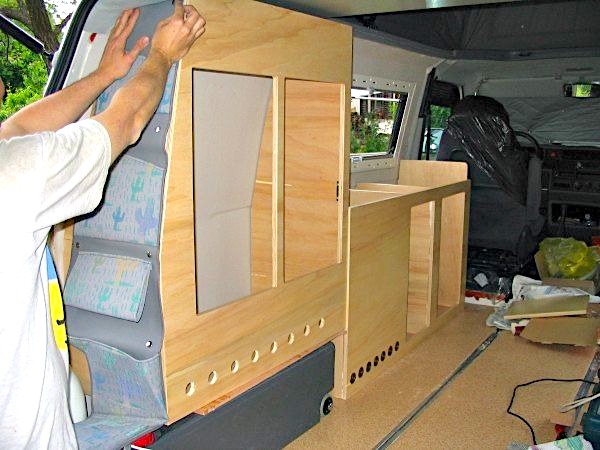
Once you’ve made the decision to purchase a van for converting into a stealth camper van for off-grid and are ready to start building it out, you’ll need to stop and do a bit more precise planning before moving forward (once you know exactly what sort of van your working with).
Here are six easy to follow steps to create the perfect stealth camper van for off grid:
1. Measure the Van Inside and Out
To build the best stealth camper, you need to first take down the exact measurements of the van you are working with. This includes measuring the roof, the distance from the ceiling to the floor on the inside, and the width (inside and out), just to name a few important areas.
These measures are crucial as you will build your custom interior based on them, bed, shelves, and everything. Guessing is not an option as you will need to order specific sized furniture, fixtures, and more.
Whether you plan to take occasion trip off grid in your camper van or to live in it full time, the last thing you want is being cramped due to not measuring precisely before building and not leaving adequate living space.
2. Design/Remodel the Interior of the Van
As most people who build their own stealth campers are working with more or less empty vans of one sort or another, we assume you are too. That said, designing the interior is probably the single most important step of the entire process other than actually finding and purchasing your van, to begin with.
Designing is one thing and should be done with lots of thought, but before you can get started with the actual building or remodeling process you will more than likely need to do some deconstructing. This may consist of anything from removing seats, partitions, and carpets in the van.
Once you’ve cleared the interior of the van, it is a blank canvas for you to paint (both literally and metaphorically). During your building process there are several basics to keep in mind:
- Styrofoam insulation for walls, ceiling, and floor
- Carpet, tile, vinyl, or hardwood floor panels
- Framing out walls, floors, and ceilings with 1x2s or 2x4s
- Building a bed frame, storage, or shelving into the frame
- Blackout curtains, paneling off windows, or tenting windows
Note: these bullets are not necessarily required for a stealth camper van, but for spending a lot of time fully off grid, they are highly suggested. Furthermore, they will increase your privacy and comfort levels as well as lower your costs (mainly air conditioning and heating).
3. Build the Sleeping Quarters
After you’ve gutted your future stealth camper and have prepared a well-planned design for it (inside and out) it’s time to get to really building it out all of the way. For many folks, this step is one of the most exciting as they see their ideas for their camper come to life.
And, of course, your sleeping space is by far the most crucial part of the entire design. A well-planned stealth camper’s interior is more often than not built entirely around the bed space. In many basic stealth vans, the interior doesn’t even develop any further than a well-mounted bed in the back.
Depending on the number of people your camper will be housing at night (or for day naps) while out there off grid you’ll need to add more or less sleeping space.
Bunk beds are not uncommon to be found in stealth campers either. That said, if you incorporate your sleeping space into the wooden framing you install on the inside of your van, the beds, regardless of the number, will be built right in and only require having mattresses mounted on them before being ready for use.
Additional considerations to make about the design of your sleeping space include under-the-frame storage areas, the ability to fold, slide, or otherwise be stored easily or transformed into seating or table space during the day or when the additional bed space is unneeded.
4. Build the Kitchen Area
Another exciting step for many is adding the kitchen area to your interior space. For some, this is nothing more than throwing a hot plate and toaster in the under-the-bed storage. That said, some stealth campers include everything from stoves and microwaves to countertop space, cabinets, and even actual kitchen sinks.
Considering you will be taking your stealth camper off grid, you’ll need to take into account how important your future kitchen space will be.
Will you need a working sink, like you have at home, or will a basin supplied by your clean water tank be sufficient? How about an oven with stove-top burners?
Again, planning ahead is essential when building a camper van due to the limited amount of space. It is especially crucial to note where your water tanks are located (even more critical if you are planning on using gravity-fed water supplies).
If you are framing out the inside of your van (which many people do for insulation purposes alone) you can easily build out a compact kitchenette and simply drop in a few appliances. The final appearance, and more importantly, the functionality, will be both sleek and efficient.
5. Add Off-Grid Essentials
When it comes to stealth camping vans built with the intent of operating off grid, several off grid essentials are necessary (unless you want to have a hard time for no reason!). More or less, designing a camper van for off grid purposes is the same as building-out a van for boondocking.
You will need to consider all utilities you will need for daily necessities as well as for entertainment (TV or stereo), communication (CB radio), and security(anti-theft system).
Basic essentials for off-griding in a van include everything from propane tanks (for heating and cooking mainly) and surge protectors (to protect your electronics) to camping fans, flashlights, fridges, and anything else you consider a must-have appliance.
Note: for those who genuinely plan on spending a significant amount of time off grid in their stealth camping van, considering installing a solar power system (with internal batteries) to power the interior of their vehicle is a great move. Solar panels allow many boondockers, off-griders, and RVers (even tent campers), to camp as long as they desire with as many electronics and devices as they wish.
6. Add a Simple Bathroom (Optional)
Not everyone who builds a stealth camper for off grid chooses to include a bathroom in their van. When they do, most of the time, they are pretty simple ones.
Being off grid, there is plenty of nature to do your business safely and hygienically. That said, many vampers also choose to overnight at parks and campgrounds that offer bathrooms (and even showers in some cases).
Toilets installed in stealth camper vans are quite diverse and include everything from small porta potties to RV and boat toilets. Minimalists keep it much simpler with a five-gallon bucket, some water or other medium to cover the waste (and it’s scent), and a mounted toilet seat. Whatever type of toilet you add, make sure it is easy to dump and does a good job at masking or otherwise eliminating odor.
There isn’t really always a need to include a bathroom in your van, however. But, by adding one, you’ll make things off grid so much more convenient. Again, it all boils down to you and your personal preferences.
Depending on the size of the camper van’s interior, you may even want to consider installing a shower or basin (for standing in under a solar/camp shower).
Showers found in most stealth vans for camping off grid are anywhere from a gallon and a half to five gallons of water. They are heated in various manners including via coffee makers, mini water heaters, and solar power/heat from the sun.
Best Camper Vans for Camping Off Grid
Not a fan of going “stealth,” but still want to take a camper van off grid living? No worries! Who’s to say you should be?
That said, if you prefer something more “traditional” check out these new class B camper vans. Each of them is from a trusted manufacturer such as Mercedes Benz or Winnebago.
1. Marco Polo – Camper Van by Mercedes Benz
2. Chinook – Camper Van by Chinook
3. Weekender – Camper Van by Midwest Automotive Designs
4. Revel – 4×4 Camper Can by Winnebago
5. Solis – camper van by Winnebago
Note: the camper van models above are by no means stealth. However, they are more than capable of supporting an authentic off grid lifestyle or experience. You will also be able to access places larger RVs and motorhomes can’t, and with the same level of comfort inside (minus a bit of the unnecessary luxuries found in many large motorhomes and RVs).
Final Thoughts About Stealth Camper Vans for Camping Off Grid
A stealth camper van for camping off grid is an excellent investment for those looking to get back to the basics and spend as much time unplugged and off of the beaten path as possible.
They are also a great rental option to give a whirl in place of taking a traditional vacation for those who just want to get lost for a bit.
What are your thoughts on stealth camper vans and camping off grid? Let us know in the comments below!
Good luck picking out or building your next stealth camper for off grid camping!

